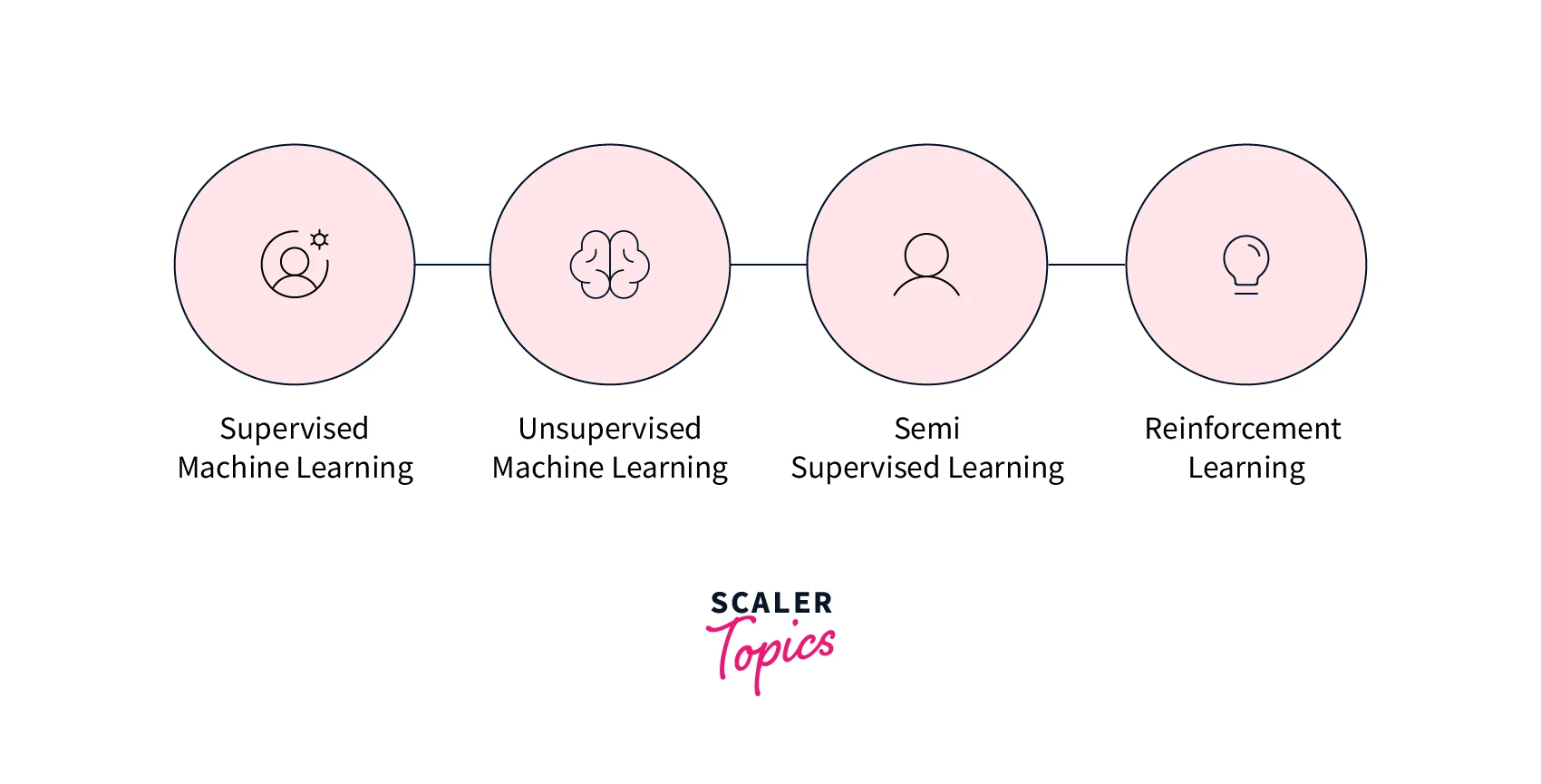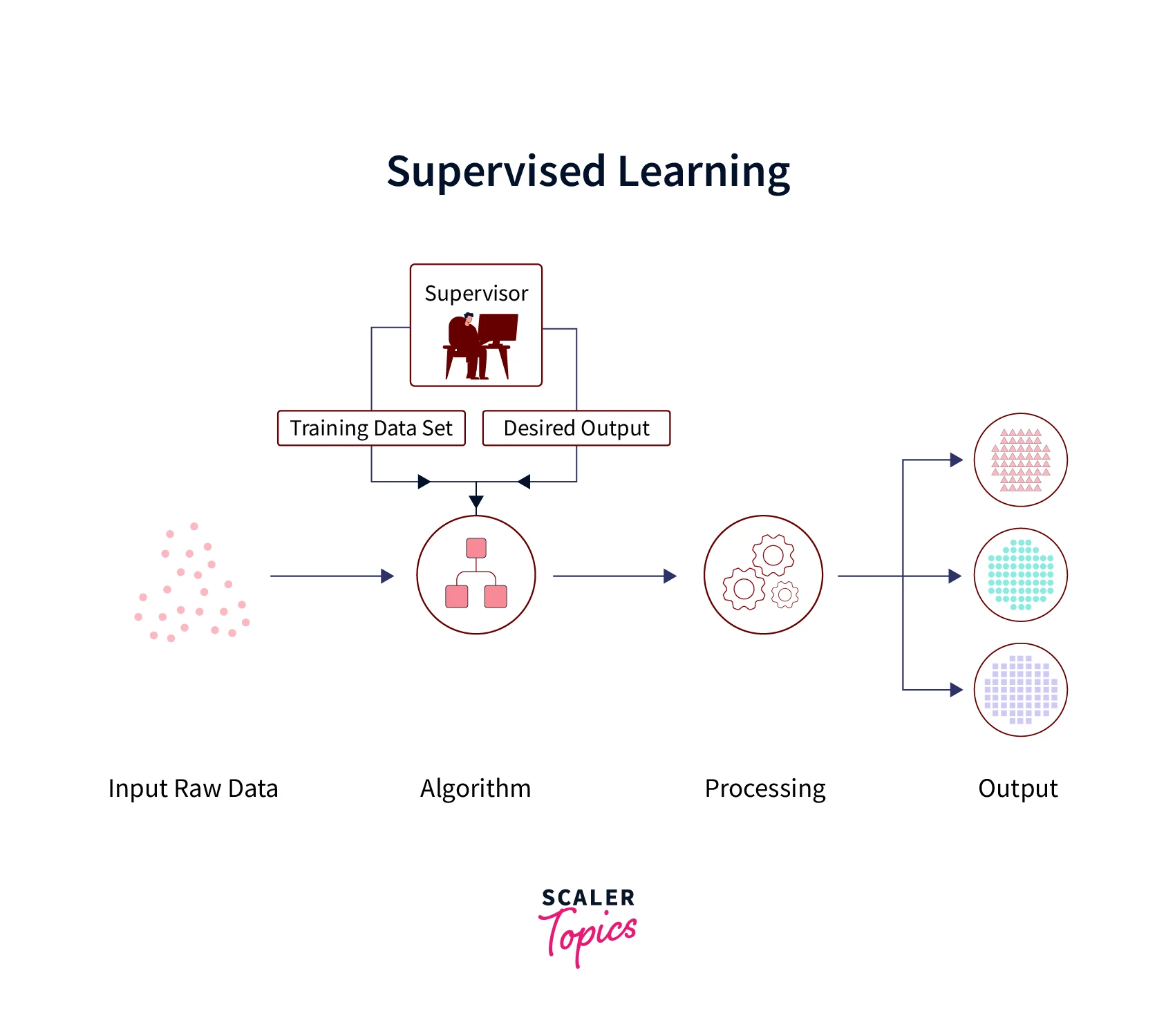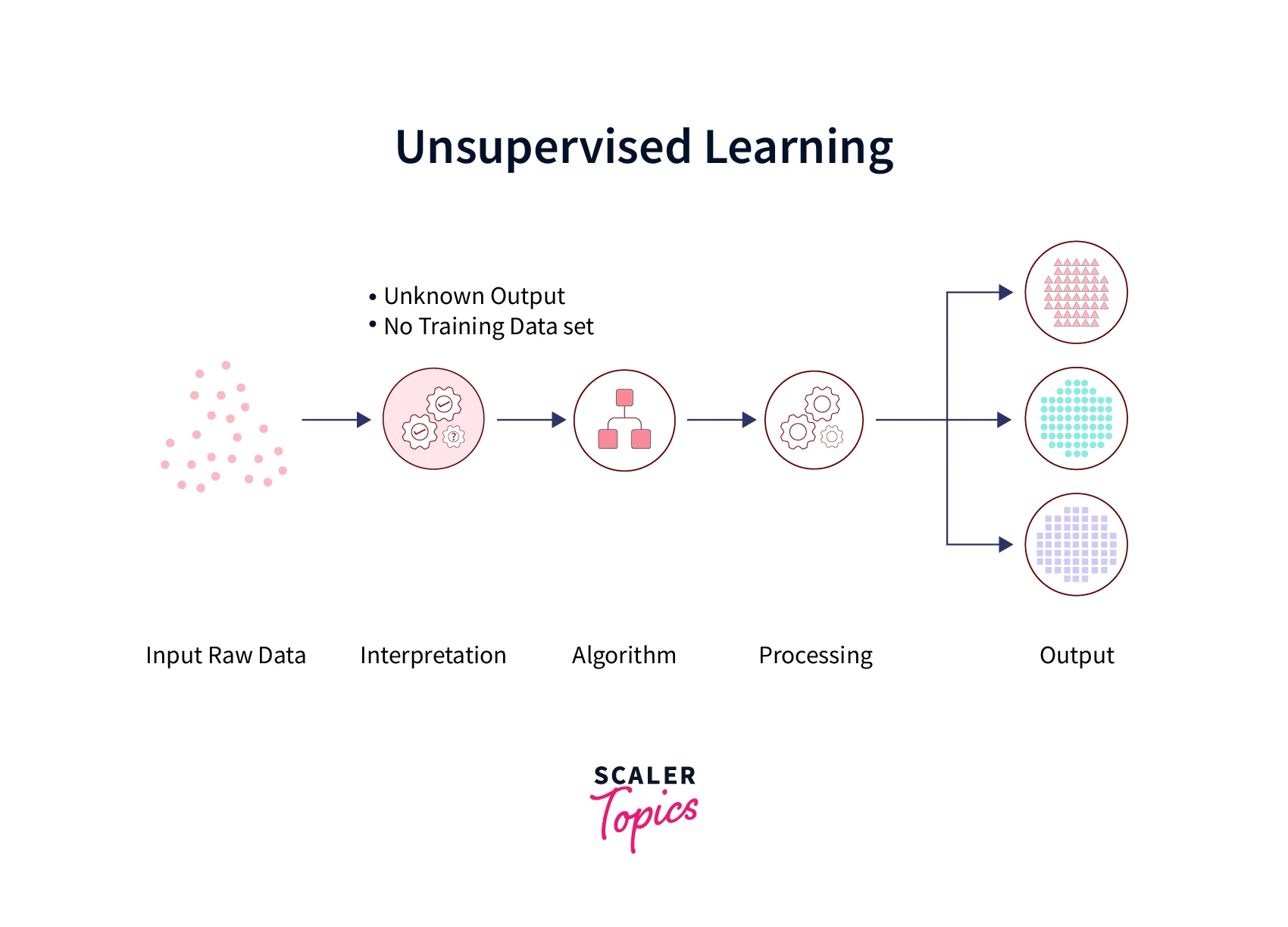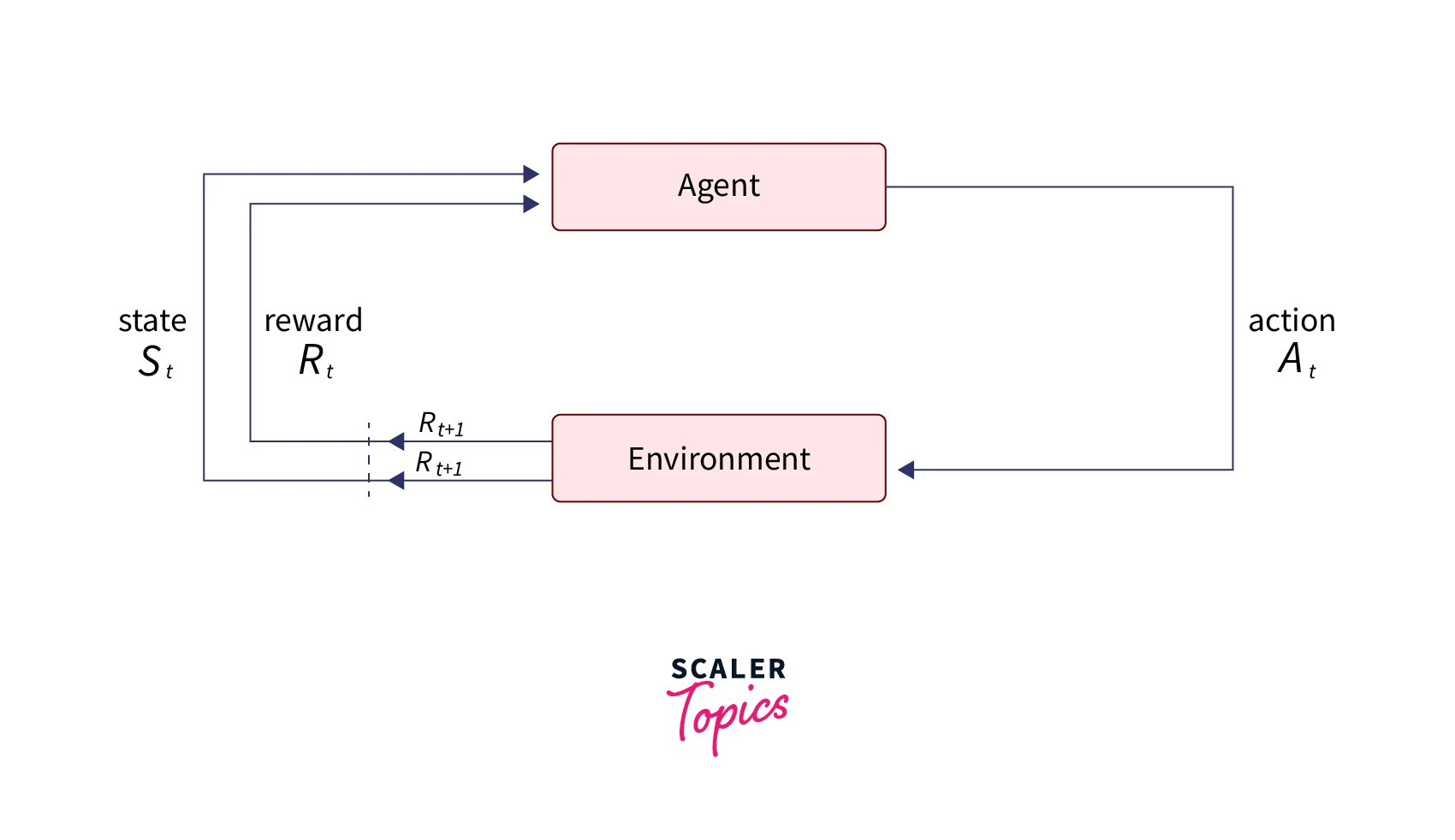Types of Machine Learning
Overview
Based on the nature of training, machine learning algorithms can be further categorized into four different categories. They are:
- Supervised machine learning algorithm
- Unsupervised machine learning algorithm
- Semi-supervised machine learning algorithm
- Reinforcement learning algorithm
In this article, we will learn the definitions and examples of each of these learning techniques in detail, which will help you to identify the dissimilarities between different types of machine learning algorithms.
Prerequisite
- The learner should know the definition of a machine learning algorithm.
- It would be better if they knew how machine learning algorithms work (discussed in previous articles).
Introduction to Types of Machine Learning
Machine learning algorithms use programming languages to analyze and generate insights from the data. Based on the nature of training and the insights it generates, machine learning algorithms can be divided into four categories. Before going into details of each of these, let us try to understand different terminologies first. The first one is applicable to supervised machine learning only.
Independent and Dependent Variable
Independent variables are the attributes of data which is used as a predictor to generate an output. Dependent variables are the ones we are interested in predicting (also called labels). For example: Given, number of rooms, area, floor height, and locality, if you want to predict the price of a flat, the aforementioned attributes are considered independent variables, and the price of the flat is considered the dependent variable.
Training and Test Data
Training data is the one that is used to train machine learning models. Test data is the one against which we are interested in generating insights.
Now, we are all set to understand each of the different types of machine learning algorithms in detail.

Supervised Machine Learning Algorithm
Supervised machine learning algorithms use both independent and dependent variables (i.e., labeled data, where the dependent variable is called a label) for training. Next, a prediction is made against test data. Three categories of supervised machine learning algorithms exist: classification, regression, and forecasting. Predicting the price of an item or forecasting the weather are typical examples of supervised machine learning algorithms.

Unsupervised Machine Learning Algorithm
For unsupervised machine learning algorithms, labels for training data are not present. Hence, it groups the data based on similarities or differences. As the name suggests, it doesn’t require any supervision. Clustering and dimensionality reduction are the two tasks that unsupervised machine learning algorithms can solve.

Semi-Supervised Machine Learning Algorithm
Semi-supervised machine learning algorithm uses both labeled and unlabeled data to train. As there is always scarcity and cost for label data, semi-supervised techniques help to find a middle ground in such scenarios. Semi-supervised techniques are useful for problems like image classification and speech recognition.
Reinforcement Learning Algorithm
In reinforcement learning, the agent (agent is a decision maker based on rewards and punishments) gathers information from the surroundings, it then explores the possibilities in a hit-and-trial manner. The feedback system of the agent rewards the action based on its suitability. This kind of learning is suitable for robotics applications (covered in detail in the following article)

Conclusion
- Broadly, there exist four different paradigms in machine learning algorithms.
- This categorization is done based on the nature of training machine learning algorithms.
- Knowing the basics of different types of machine learning algorithms will help learners understand the subsequent articles. In the next article, we will learn the applications of different types of machine learning algorithms in depth.
